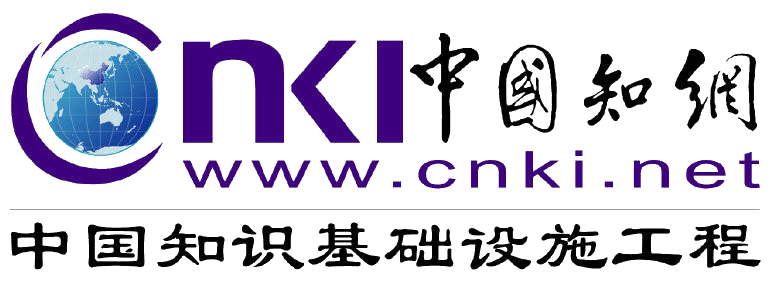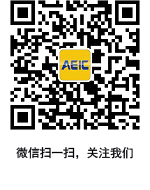Senior A.Prof.Juann Hung(USA), Xi’an Jiaotong-Liverpool University, China
洪惠专高级副教授(美国),西安交通利物浦大学,中国
Research Area: International Finance, Open Macroeconomics, International Trade
研究领域:国际金融,开放的宏观经济学,国际贸易
Title:Prospect of the RMB as a Key International Reserve Currency
标题:人民币作为主要国际储备货币的前景
Abstract:
Several papers have projected when the RMB will become a prominent international reserve currency. However, projections in the literature differ significantly. In this paper, we evaluate projections by several authors and conducts our own projections. We compare the specifications and forecast performances of different equations in the literature. We then conduct simulations, using a variant of the best-performing equation emerged from analysis in the preceding step, to arrive at our own projections. In addition, we discuss the uncertainty surrounding our projections by drawing from the historical analysis of the dollar’s taking over of the sterling as the dominant reserve currency and recent policy developments in China that have bearings on the RMB’s reserve-currency prospect. Our simulations and analyses suggest that the RMB is unlikely to surpass the U.S. dollar or the euro as a dominant reserve currency even as of 2050.

Prof.Shun-Wing NG, University of Saint Joseph, Macau,China
吳迅榮教授,聖若瑟大學,澳门
Research Area: Educational Management and leadership, School-Family-Community Collaboration, Higher Education, Teacher Education and Development, Educational policy, Educational innovations and changes, Citizenship Education
研究领域:教育管理与领导,学校 - 家庭 - 社区合作,高等教育,教师教育与发展,教育政策,教育创新与变革,公民教育
Title:Critical Reflections on the Impacts of Globalization on Internationalization of Higher Education
标题:全球化对高等教育国际化影响的批判性思考
Abstract:
As a result of the rapidly globalizing world of disintegrating country borders and supranational network of capital and knowledge, the pace of transnational education is increasing. Transnational education is a phenomenon that is part of the globalization of trade in goods and services and its emergence is fuelled by the inclusion of higher education as an industry under the framework of the General Agreement on Trade in Service (GATS). The GATS is a treaty of the World Trade Organization (WTO) that entered into force in January 1995 as a result of the Uruguay Round negotiations. Education is included in the new services negotiations, which began in January 2000. With reference to GATS agreement, transactional education carries the notion of opening up a country’s territory to the global trade in education services. It covers four modes of supply for the delivery of educational services in cross-border trade, namely Mode 1: cross-border supply, Mode 2: consumption abroad, Mode 3: commercial presence, and Mode 4: presence of natural persons. The inclusion of education services as one of the twelve service sectors covered by GATS is then a catalyst for massification and marketization of higher education which has caused severe competition for funds and students and faculty among universities. Massification exerts tremendous impacts on governance, finance, quality, curriculum, faculty and student enrolment.
Generally speaking, transnational education includes international student recruitment, exchange of academic programs, travel study, study abroad, work abroad, internationalizing the curriculum, and student and professor exchanges. However, that There may be possible impediments arising from these four modes of supply such as inappropriate restrictions on transmission of course materials, insufficient financial assistance to students, regulations for twinning arrangement and foreign suppliers, immigration control, quotas for staff and international students, etc. Besides, globalization embedded with neo-liberal values is the key challenge facing the role and function of higher education. This keynote concerns the exploration of the challenges of exporting Hong Kong’s higher education services to the Asian region due to the rapidly growing demand for quality transnational education in Asia. Empirical research is then reported on the issues and challenges in terms of strengths, weaknesses, opportunities and threats (SWOT) that Hong Kong will face when promoting its higher education services in the region. The final section draws on that research to suggest ways that may enhance competitiveness of Hong Kong’s higher education services.
Prof.Chang, Kung-Hsiung, Pingtung University of Sci. & Tech, Taiwan,China
张宫熊,國立屏東科技大學,台湾
Research Area: Finance, Investment, Investment Psychology, Game Theory
研究领域:金融,投资,投资心理学,博弈论
Title:Duality in Finance: A Quantum Entanglement with the Chinese Taiji
标题:金融的二重性:与中国太极拳的量子纠缠
Abstract:
Chinese Laozi said Way that can be spelled out. Cannot be the eternal way. Names that can be named. Must change with time and place. “Emptiness” is what I call the origin of heaven and earth. “Existence” is what I call the mother of everything that had a birth. The book of EA or Changes said, in the system of EA there is the Great Ultimate, it generates the two Modes (Yin and Yang). The two Modes generate the four Forms. The four Forms generate the eight Trigrams. The eight Trigrams generate the sixty four divinatory trigrams or phenomena. The Chinese Taiji generates everything through duality. The micro observation of the world from the view of the Chinese Taiji matched with the Quantum mechanics’ duality. The quantum entanglement can be described by Yin-Yang Taiji, and the quantum superposition can be described by eight Trigrams. The Nano science application can be enriched by Quantum mechanics and Taiji philosophy likes quantum computer, quantum telegraph, and quantum medicine. Appreciate emptiness from Taiji, that we may see nature of the Way’s versatility. Appreciate existence, that we may see the extent of the Way’s possibilities. What appears to be misfortune may pave the way for fortune. What appears to be fortune may pave the way for misfortune. Who knows the absolute? The right that we know is often not right. What is right may prove to be wrong. What is good may prove to be bad. Profit and risk existed in the financial market as a duality. But you can ignore them if you are not entangled with it. That is duality, these two, emptiness and existence came the same source.
Key Words: Duality, Finance, Quantum Entanglement, Chinese Taiji, Yin-Yang, Profit, Risk.

A.Prof.Ghaffar Ali, Shenzhen University, China
Research Area: Environmental Economics, Climate Change Policy, Food Economics, Renewable Energy
研究领域:环境经济学、气候变化政策、食品经济学、可再生能源
Title:Long-term Plan of China-Pakistan Economic Corridor: A Perspective of Food Industry in Pakistan
标题:巴基斯坦食品工业的视角看中巴经济走廊长期规划
Abstract:
The China-Pakistan Economic Corridor (CPEC), as part of the Belt and Road Initiative, has been making remarkable progress. Since the formal establishment of diplomatic relations, the People’s Republic of China and the Islamic Republic of Pakistan have seen their relations ever consolidating and progressing. Throughout different historical periods and despite changes with the times, Chinese and Pakistani governments and people have been working hard to enrich the friendship, and have set a model for friendly bilateral ties between different cultures, social systems and ideologies. Chinese and Pakistani governments and people have deeply realized the importance of developing the China-Pakistan Economic Corridor, starting from Kashgar in Xinjiang, China, and reaching Karachi and Gwadar, southern coastal cities in Pakistan via the Khunjerab Pass and several other nodal areas, for cementing China-Pakistan economic relations, promoting friendly cooperation and establishing the shared destiny of the two countries. CPEC is an economic and development project for the benefit of the people of the region. This plan is effective until 2030, the short-term projects included will be considered up to 2020; medium-term projects up to 2025; and long-term projects up to 2030. As President Xinjing Ping said, “at present, the two sides are working together to steadily advance the China-Pakistan Economic Corridor (CPEC). Committed to building a China Pakistan community of common destiny, we cooperate to expand our converging interests and strive for common development. Our aim is to deliver even more benefits to our peoples and realise brighter development prospects.”
With such high aims and values there are plenty of avenues, opportunities, and challenges in multiple areas on both sides. However, being small economy, Pakistan need to develop and approach the corridor in a professional way so that it can meet the global marketing requirement. One such perspective of food industry is provided in this piece of analysis. A detailed opportunities and perspective is provided with basic background information on CPEC.







